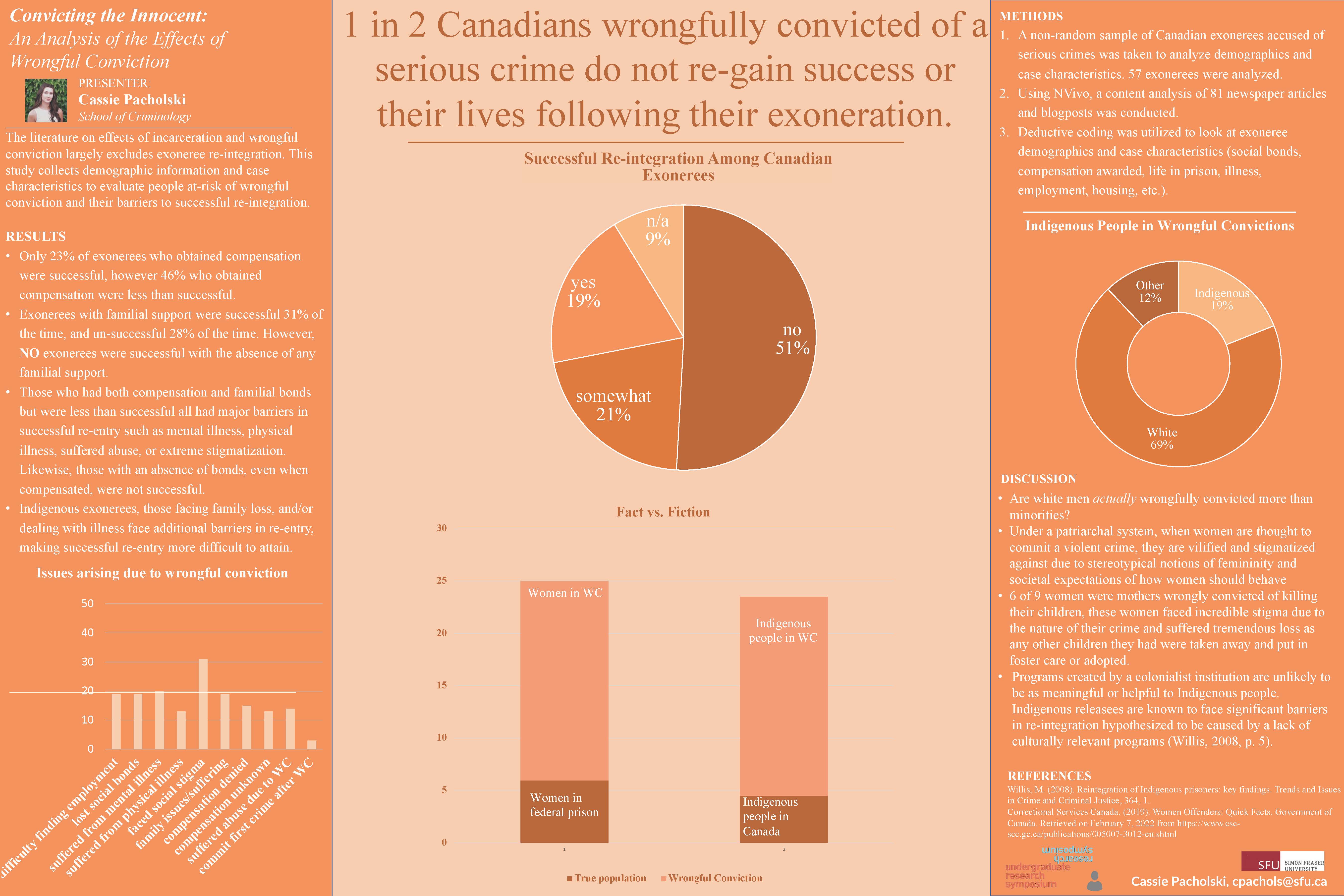Convicting the Innocent: An Analysis of the Effects of Wrongful Convictions and Available Remedies
Main Article Content
Abstract
Throughout North America, thousands of individuals have been incarcerated for crimes they did not commit, or crimes that never occurred. The literature on wrongful convictions has largely addressed how eyewitness testimony, tunnel vision, forensic errors, and false confessions contribute to wrongful convictions. However, this growing body of research largely neglects the experiences of exonerees and their re-integration into the society that turned on them. This study addresses this deficit in the literature by analyzing case characteristics and demographics of the dozens of known exonerees in Canada. By analyzing demographics such as race, education, age, and gender, we can begin to determine risk factors, how incarceration and wrongful conviction impacts this unique group of people, and what factors lead to successful, or unsuccessful reintegration. A greater understanding of exoneree characteristics and reintegration is imperative in addressing the failures of the criminal legal system and to protecting exonerees.
Faculty Supervisor: Dr. Gail Anderson, School of Criminology, Simon Fraser University
Article Details

This work is licensed under a Creative Commons Attribution-NonCommercial-NoDerivatives 4.0 International License.

